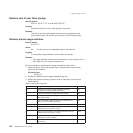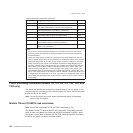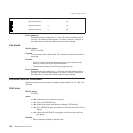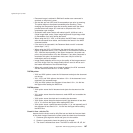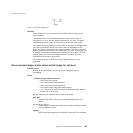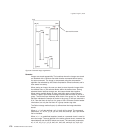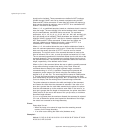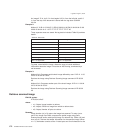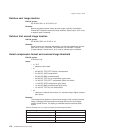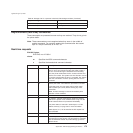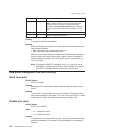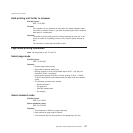
Remarks:
Images are stored sequentially. The locations where the images are stored
are obtained with a Retrieve next table location command before issuing
the store command. The image is compressed using the compression
algorithm last selected by the Select compression format command, and is
then stored in memory.
When storing an image, the user can elect to store the entire image within
the defined area, or just selected blocks within the defined area. Saving
selected blocks reduces storage use, but keeps related data together.
When storing multiple blocks of data, each block gets a unique storage
location. A byte in the header message indicates that the block is part of a
group. The first half-byte indicates which block of the group it is, the second
half-byte indicates the number of blocks in the group. If the byte returned is
X'14', then the block is the first of a group of four. All blocks contain header
information, but only the first block in a group contains tag data.
The Select storage method byte (n1) defines how the image should be
stored.
When n1 = 0, all data defined y x0, y0, dx0, dy0 is stored. The command
parameters, x1, x2, x3, y1, y2, y3, dx1, dx2, dx3, and dy1, dy2, dy3 should
not be included.
When n1 = 1, a predefined template, based on a personal check is used to
store the image. The area defined is the entire personal check, however the
name/address and the MICR blocks are saved. The command parameters,
x0, x1, x2, x3, y0, y1, y2, y3, dx0, dx1, dx2, dx3, and dy0, dy1, dy2, dy3
+
(0,0)
Scanned Document
(dx0)
(dx1)
(dy1)
(dx2)
(dy2)
(dy0)
(dy3)
(dx3)
(x0,y0)
(x1,y1)
(x2,y2)
(x3,y3)
Figure 52. Scanned image organization
Updated April 2, 2009
170 SureMark Printers User’s Guide



